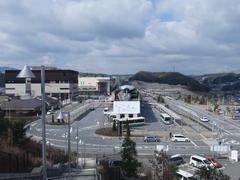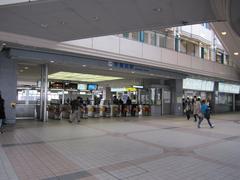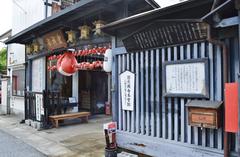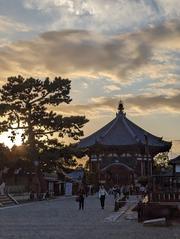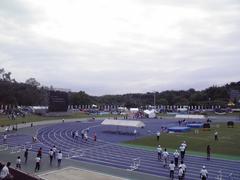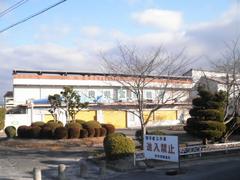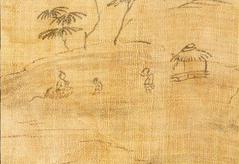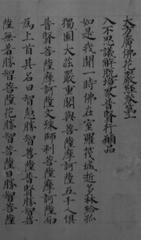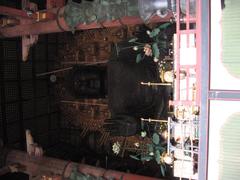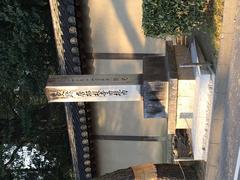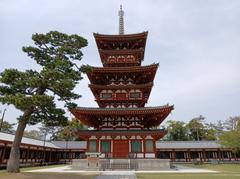Hokke-ji Temple: Visiting Hours, Tickets, and In-Depth Guide to Nara’s Historic Buddhist Site
Date: 15/06/2025
Introduction
Nestled in the historic city of Nara, Hokke-ji Temple (法華寺) stands as a testament to Japan’s Buddhist tradition and the pioneering role of women in religious and social life. Founded in 745 CE by Empress Kōmyō, consort of Emperor Shōmu, Hokke-ji was established as the nation’s foremost Buddhist nunnery and a center for female religious practice. Today, it is renowned not only for its spiritual legacy, but also for its beautifully preserved architecture, seasonal gardens, and significant art treasures.
This comprehensive guide provides up-to-date information on Hokke-ji visiting hours, tickets, accessibility, and practical travel tips. Whether you are a first-time visitor or a seasoned explorer of Nara’s historical sites, read on to discover how to make the most of your visit to this tranquil and culturally rich destination.
Table of Contents
- Historical Background
- Cultural and Religious Significance
- Visiting Information
- Temple Highlights
- Events, Etiquette, and Practical Tips
- Nearby Attractions
- Frequently Asked Questions (FAQ)
- Conclusion and Final Tips
- Sources
Historical Background
Hokke-ji Temple was established in 745 CE by Empress Kōmyō on the former estate of her father, Fujiwara no Fuhito. It was Japan’s first major Buddhist nunnery and a centerpiece of the kokubun-niji (provincial nunnery) system, mirroring the kokubunji (provincial temples) that promoted Buddhism as a unifying force in the newly centralized Nara state (Japan Experience; NaraTrip).
Empress Kōmyō’s vision extended beyond religious practice; she integrated social welfare into the temple’s mission, founding a hospital, a facility for the poor, and the iconic public bathhouse (“Karafuro”). These institutions reflected her commitment to Buddhist compassion and the alleviation of suffering (Chrononaut).
Hokke-ji flourished under imperial patronage but endured cycles of decline and restoration. After the capital moved to Heian-kyō in 794, support waned, and the temple suffered damages during wars in the late Heian and Sengoku periods. Major reconstructions in the early 13th and 17th centuries revived the temple, incorporating Momoyama and Edo period architectural styles (Explore Nara; Japanese Wiki).
Cultural and Religious Significance
Hokke-ji is celebrated as the head nunnery of Japan, playing a vital role in the development of female Buddhist practice. Its principal image, the Eleven-faced Kannon (Jūichimen Kannon), embodies compassion—especially toward women and the suffering—and is revered as a National Treasure.
The temple’s status as a monzeki (imperial or aristocratic lineage) temple further highlights its close ties to the imperial family and its importance in religious life. Annual rituals, festivals, and the ongoing presence of nuns continue to make Hokke-ji a living center of worship and cultural preservation (Japanese Wiki).
Visiting Information
Visiting Hours & Closures
- Regular Hours: 9:00 AM – 5:00 PM (last entry at 4:30 PM)
- Annual Closures: August 12–17 and December 24–31 (check the official website for special exhibition hours and holiday changes)
- Special Exhibitions: Extended hours and special viewing periods for the Eleven-faced Kannon occur in spring and autumn
Tickets & Admission Fees
- Regular Admission: Adults ¥700, Students (elementary/junior high) ¥350, Disabled visitors (and one companion) ¥350
- Special Openings: ¥800–1,000 for adults, ¥400–500 for students (varies by event)
- Group Discounts: Available for groups of 20 or more
- Separate Garden Admission: ¥300 for Karakuen garden, except during special exhibitions
How to Get There
- By Bus: Take a Nara Kotsu bus from JR Nara or Kintetsu Nara Stations to the Hokke-ji stop (a three-minute walk to the temple)
- By Train & Walk: 25-minute walk from Shin-Omiya Station (Kintetsu Line)
- By Car: Free parking for visitors (up to 30 cars and 5 buses), with restrictions during events
(Explore Nara; Nara City Guide)
Accessibility
- The temple grounds are mostly flat and wheelchair-accessible, with paved paths and ramps near main areas. Some historic buildings have steps or uneven flooring; assistance is available upon request.
Temple Highlights
Main Hall and Eleven-faced Kannon
The main hall (hondō), rebuilt in the early 17th century, houses the revered Eleven-faced Kannon (Jūichimen Kannon)—a wooden statue believed to be modeled after Empress Kōmyō herself. This National Treasure is typically hidden from view, except during special spring and autumn exhibitions (Chrononaut; Explore Nara).
Ancient Bathhouse (“Karafuro”)
The symbolic Karafuro bathhouse is a rare surviving structure that exemplifies the temple’s role in social welfare. It stands as a monument to Empress Kōmyō’s legendary compassion and her initiatives in public health (Chrononaut).
Gardens and Seasonal Beauty
Hokke-ji’s gardens are especially renowned for their peonies in late April and early May, as well as vibrant autumn foliage. The precincts include a pond garden designated as a National Historic Site and Place of Scenic Beauty (Wikipedia).
Artistic and Architectural Heritage
The temple houses several Important Cultural Properties, including Buddhist sculptures, paintings, and architectural elements from the Nara, Heian, and Kamakura periods. The south gate (Nanmon) and relocated Edo-period farmhouse also reflect the temple’s layered history (Japanese Wiki).
Events, Etiquette, and Practical Tips
- Events: Hokke-ji hosts annual rituals and festivals, such as Jizo-e (July), Urabon-e (August), Tenno-gu Festival (October), and Ohitaki (December). Special viewing periods for the Eleven-faced Kannon occur in spring and autumn.
- Souvenirs: Goshuin temple stamps, omamori charms (including the unique Omamori Inu), and tea whisks (Komyo Chasen) are popular.
- Etiquette: Dress modestly; maintain a quiet, respectful demeanor. Be prepared to remove shoes in certain buildings.
- Photography: Permitted in gardens and outdoor areas. Prohibited inside the main hall and when viewing the Eleven-faced Kannon.
- Facilities: Restrooms and a small temple shop are available. Free parking, though limited during major events.
- Language: Limited English signage; consider using translation apps. Volunteer guides may be available during exhibitions.
Nearby Attractions
- Heijō Palace Site: Ancient imperial palace ruins adjacent to Hokke-ji
- Kairyuou-ji Temple: Historic temple within walking distance
- Nara Park: Famous for free-roaming deer and major temples including Tōdai-ji
- Kasuga Taisha Shrine: UNESCO World Heritage Site nearby
- Dining & Accommodation: Numerous options in central Nara, from cafés to traditional ryokan (Japan Guide)
Frequently Asked Questions (FAQ)
Q: When is the best time to visit Hokke-ji Temple?
A: Spring (late April–May) for peonies, and autumn (October–November) for foliage and special exhibitions.
Q: How much are tickets?
A: ¥700 for adults, ¥350 for students. Prices may rise during special exhibitions.
Q: Is Hokke-ji wheelchair accessible?
A: Most areas are accessible, but some historic structures have steps.
Q: Can I take photos inside the temple?
A: Only in gardens and outdoor areas; photography is restricted inside main halls.
Q: Are guided tours available?
A: Occasionally, especially during exhibition periods. Check the official website for updates.
Conclusion and Final Tips
Hokke-ji Temple offers a peaceful, historically rich experience at the heart of Nara’s Buddhist landscape. From its origins as Japan’s premier Buddhist nunnery to its enduring legacy of compassion, art, and seasonal beauty, Hokke-ji is an essential stop for anyone seeking spiritual reflection or a deeper understanding of Japanese culture.
To maximize your visit:
- Plan around special exhibitions in spring and autumn.
- Check the official website for updates on hours and events.
- Explore neighboring historic sites to enrich your Nara itinerary.
For more travel guidance, download the Audiala app and follow our channels for the latest insights and updates on Japan’s heritage destinations.
Sources
- Japan Experience: Hokke-ji Temple
- NaraTrip: Hokke-ji
- Japanese Wiki: Hokke-ji Temple
- Explore Nara: Hokke-ji Temple and Kairyuou-ji Temple
- Nara City Guide
- Chrononaut: Hokke-ji Temple
- Wikipedia: Hokke-ji
- Visit Nara: For First Time Visitors
- Japan Guide: Nara
- Wanderlog: Hokke-ji
- Annee de Pelerinage
